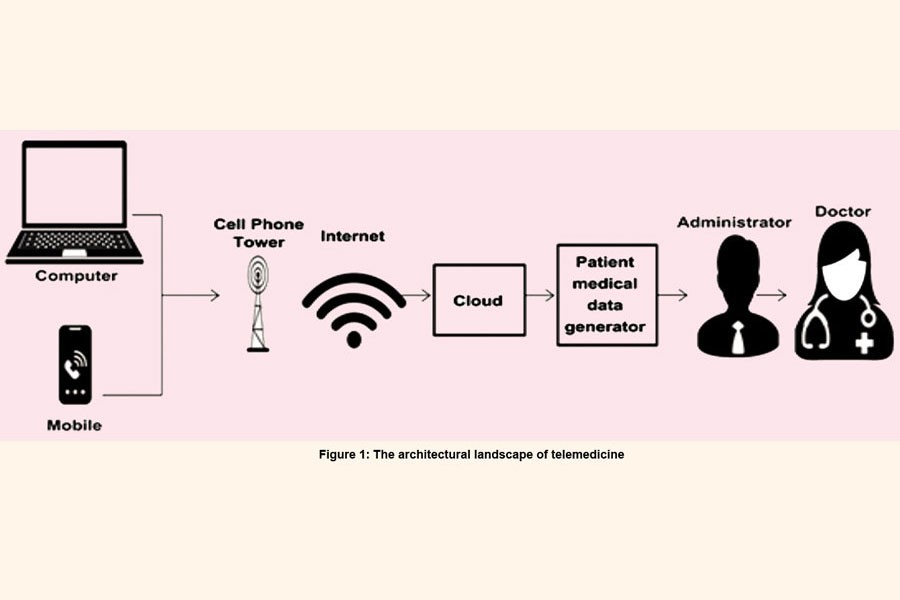
 The new normal is now upon us. Restaurants are now filled with conversations and laughter, the traffic jam is back with a vengeance, and the caseload is hovering within the low hundreds. In a nutshell, life has become normal.
The new normal is now upon us. Restaurants are now filled with conversations and laughter, the traffic jam is back with a vengeance, and the caseload is hovering within the low hundreds. In a nutshell, life has become normal.
We have weathered through what we believed was a never-ending storm. While we are not sure whether we have reached the light at the end of the tunnel and there is still a very real chance of an impending surge in infections, the people have generally let their guard down. Or should we say they have let their masks down?
The pandemic has generated a substantial effect that we had to find many ways to cope with the existing situation, ranging from Zoom meetings to online Eid shopping. This pandemic has also opened avenues for new healthcare-seeking pathways: a practice commonly known as telemedicine.
The World Health Organisation broadly describes telemedicine as "the delivery of healthcare services (…) by all healthcare professionals using information and communication technologies for the exchange of valid information for diagnosis, treatment and prevention of diseases and injuries (…) all the interest of advancing the health of individuals and their communities. Telemedicine constitutes four key elements which include: (1) clinical support; (2) overcoming geographical barriers; (3) engaging various types of ICT; and (4) improving health outcomes. While this concept emerged in the 1970s and has demonstrated remarkable impact on previous epidemics (e.g. SARS epidemic in 2003 and MERS-CoV in 2013), it played a pivotal role in the Covid-19 context.
In light of the positive scientific evidence presented by previous epidemics, this approach was widely applied in industrialised countries (e.g. US, UK and China) through adopting novel digital technologies such as mobile apps, voice and video calling software, etc. all of which have been supplementing conventional phone consultations. Referrals to in-person facilities are only limited to emergency cases.
With the government's vision of a "Digital Bangladesh" being put in the forefront, there have been examples of the telemedicine approach being put in place in Bangladesh itself. The concept of telemedicine was floated in 2005 as a brainchild of Grameen Telecom and the Diabetic Association of Bangladesh. It was initially used to administer healthcare to people with non-communicable diseases, namely diabetes. Thereafter, some mobile apps have followed suit with the telemedicine approach, such as Jeeon, Pulse Health Services Ltd., Shasto Bathayon, and Bachao-Health. It is worth noting that each of apps has their own unique modality. For instance, Pulse Health Services Ltd consists of a Cloud-based smart health monitoring system which undertakes regular health checkups of vitals (e.g. body temperature, BMI, blood pressure, blood sugar and oxygen saturation) using smart devices. In another example, Bachao-Health is a telemedicine platform based in Facebook Messenger, which is a chatbot-based platform accompanied by medical consultations via the messenger app.
Studies have shown that telemedicine has reached a broader range of patients who may have been experiencing geographical access barriers otherwise. Moreover, since the pandemic led to a shift in prioritisation to the Covid-19 response, this left other health concerns neglected, thus potentially leading to an increase in other co-morbidities. Moreover, many patients delayed healthcare-seeking out of the fear of contracting the COVID-19 infection itself. Therefore, this served as a saving grace for people to address their other health issues within the comfort of their own homes. This has been especially beneficial for elderly, extremely ill or immunocompromised populations. The telemedicine approach has also alleviated several logistical barriers, such as the costs associated with travelling to the healthcare facility, the time spent commuting from a remote location, and the long lines and waiting times in the healthcare facility itself.
Let's take Sohana (pseudonym) for example. Sohana is a 35-year-old pregnant woman from a remote area in Gaibandha, away from any semblance of town or city infrastructure. For a while, she was panicking as the baby was not making any movement in her womb for prolonged periods of time. Considering her current stage of pregnancy, commuting to the nearest healthcare centre during odd hours seemed quite exhausting. However, since she reached out to her doctor using voice call software, the latter advised that she had nothing to worry about. In this way, she saved the money, time and energy required to travel to the facility. Telemedicine can also be a cost-effective entry point for prioritising patients who urgently need to seek in-person care, versus patients whose problems can be alleviated through a mere conversation with the healthcare provider.
Nevertheless, telemedicine presents its own set of challenges, as also corroborated by the local and global literature. Firstly, telemedicine requires a certain level of access to technology, which may be a problem for those who lack access to high-speed Internet and viable devices (such as a smartphone). This could arguably broaden the healthcare access gap for less privileged people. Furthermore, since the digital technologies associated with telemedicine sometimes require a certain degree of technical knowledge and skill, it may be harder for elderly populations to intuitively navigate the telemedicine platform. From both the patients and healthcare providers' perspectives, sometimes virtual consultations did not suffice for a complete diagnosis. In particular, some acute pain, musculoskeletal and pregnancy cases warrant in-person appointments, otherwise remote diagnoses would be more likely to lead to errors.
Nevertheless, telemedicine has become instrumental in connecting people with essential healthcare services, whilst also circumventing Covid-19 transmission. However, the question remains about whether or not this is merely a temporary remedy in the current situation, or this is a strategy that can be pursued in the long run.
It is hard to speculate about the trajectory of the pandemic. Infectious disease experts around the world have noted that this pandemic could linger as long as new Covid-19 variants emerge and people continue to ignore health guidelines. However, we would have to increase the proportion of vaccinated people in the country, in order to come closer to the goal of achieving herd immunity. In this context, continuing telemedicine would be helpful for minimising human traffic and containing the spread of infections to a greater extent. However, this would also lead to limited in-person engagement, incomplete diagnoses and limited scope to foster a therapeutic relationship with the healthcare provider.
In the long-run, we could devise a hybrid healthcare-seeking model which systematically triages the critical patients warranting in-person investigation, support and treatment. In this way, we would still be able to nurture the provider-patient relationship, while also leveraging the benefits of the telemedicine modality. Nevertheless, in order to ensure a successful telemedicine system, it is integral to facilitate capacity building initiatives for both the patients and healthcare providers so that they are better equipped to intuitively navigate the system.
That is the only key to a potentially innovative and sustainable healthcare system.
Sabbir Siddiqui is a technology enthusiast and a professional software engineer with over 7 years of experience in the software industry. He is a Bachelor of Science in Electrical and Computer Engineering from Lafayette College, Pennsylvania USA. He can be reached at sabbir.m.siddiqui@gmail.com.
© 2025 - All Rights with The Financial Express
